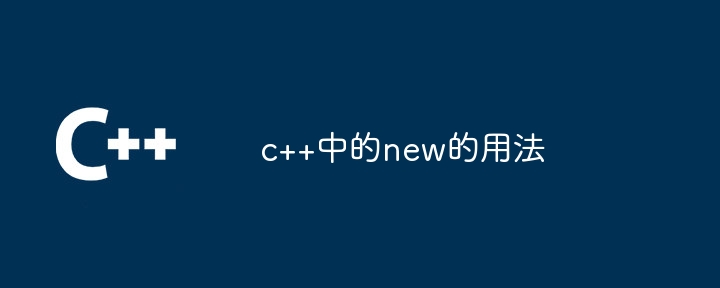Home >Backend Development >C++ >Usage of new in c++
Usage of new in c++
- 下次还敢Original
- 2024-04-26 16:39:151277browse
The new operator in C is used for dynamic memory allocation, allocating a specified size of memory from the heap memory and returning a pointer to the allocated memory. Usage methods include: 1. Allocate memory: use the new operator to allocate the required size of memory; 2. Access the allocated memory: access the allocated memory through the returned pointer; 3. Release the allocated memory: use the delete operator to release no longer Dynamically allocate memory as needed.

Usage of new in C
The new operator is the basic tool in C for dynamic memory allocation. It allocates memory of the specified size from heap memory and returns a pointer to the allocated memory.
Syntax
<code class="cpp">void* new(size_t size);</code>
Where:
-
sizeis the memory size to be allocated (in bytes ). - The return value is a
void*pointer pointing to the allocated memory.
Usage
The steps to allocate memory using new are as follows:
-
Allocate memory: use new operator to allocate The required size of memory. For example:
<code class="cpp">int* ptr = new int;</code>
-
Access allocated memory: Access allocated memory through the returned pointer. For example:
<code class="cpp">*ptr = 10;</code>
-
Release allocated memory: Use the delete operator to release dynamically allocated memory that is no longer needed. For example:
<code class="cpp">delete ptr;</code>
Note
- The new operator may throw a std::bad_alloc exception if it cannot allocate enough Memory.
- You must always use the delete operator to release dynamically allocated memory that is no longer needed to avoid memory leaks.
- The new operator can only be used to allocate raw memory blocks (uninitialized), using new to initialize an object will lead to undefined behavior.
- The new operator always returns a void* pointer, which requires type conversion for use.
The above is the detailed content of Usage of new in c++. For more information, please follow other related articles on the PHP Chinese website!

